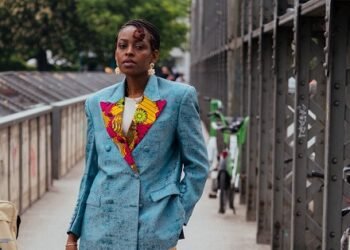In an era where government initiatives increasingly intersect with technology, art, and social innovation, the role of creatives within governmental frameworks has never been more crucial.
These individuals—including graphic designers, writers, artists, and digital strategists—bring unique perspectives that enhance public policy and improve citizen engagement.
However, to fully leverage their talents, creatives in government must hold quarterly stakeholder engagements.
Such meetings promote transparency and collaboration and ensure that diverse voices contribute to the decision-making process, ultimately leading to more effective governance.
Veteran broadcaster and executive member of the Musicians Union of Ghana (MUSIGA), Daddy ‘Ahuma Ocansey’ Bosco, has admonished creatives who have been appointed to various government positions not to lose touch with industry stakeholders.
He emphasized the importance of maintaining constant interaction with the creative industry community. He believes this will go a long way in helping their work.
“I am saying this to our guys who have been put in leadership positions. They need to have quarterly engagements because their four-year tenure will end sooner than expected.”
Daddy ‘Ahuma Ocansey’ Bosco
Daddy Bosco made this remark while discussing some of the mistakes Mark Okraku-Mantey, the former Deputy Minister of Tourism, Culture, and Creative Arts, made during his tenure.
While acknowledging that Mark may have been constrained by the bureaucracy and protocols of governance, he pointed out that he failed to bring the creative arts industry people closer to him. “Some of the things I told him but he forgot were that, even when he was President of the Creative Arts Council, he should have had quarterly engagements with the people,” he said.
“You see, human beings… sometimes if I am telling you something and you are not even acting on it, but I think you are listening to me, it is a different vibe. And having the opportunity here, I will say it in his face that, brother, that is where you dropped the ball. Because you were one of us. It was easy for you to bring us along, even just calling us quarterly at ATIC and sitting down and talking. That alone would have changed a lot of things.”
Daddy ‘Ahuma Ocansey’ Bosco
Governments around the world face the pressing challenge of keeping pace with rapidly evolving societal needs and technological advancements.

Traditional methods of policy-making often fall short in addressing the complexities of modern issues such as climate change, social inequality, and public health crises.
Creatives possess the ability to think outside the box, offering innovative solutions that transform bureaucratic processes into more responsive and engaging systems.
Quarterly stakeholder engagements provide a structured opportunity for these creative minds to share their insights and collaborate with other stakeholders, including community members, non-profit organizations, and private sector partners.
One of the primary criticisms of governmental operations is the perception of opacity and detachment from the communities they serve. By instituting regular stakeholder engagements, creatives in government bridge the gap between policymakers and the public.
These gatherings serve as a platform for open dialogue, where stakeholders voice their concerns, provide feedback, and participate actively in the policy-making process.
This transparency not only builds trust between the government and its constituents but also empowers citizens to take ownership of their communities. When people feel heard and valued, they are more likely to engage positively with government initiatives.
Creatives Fostering Collaboration Across Disciplines

Creativity thrives in environments that encourage collaboration. Quarterly stakeholder engagements create a fertile ground for cross-disciplinary partnerships, allowing creatives to work alongside technologists, social scientists, and community leaders.
This collaborative approach leads to the development of comprehensive solutions that are informed by a variety of perspectives. For example, a creative team might work with data analysts to visualize complex information, making it more accessible to the general public.
Such partnerships also lead to the co-creation of programs that resonate more deeply with the community, ensuring that initiatives are not only innovative but also relevant and effective.
Communities are not monolithic; they are composed of individuals with diverse backgrounds, experiences, and needs.
Quarterly stakeholder engagements provide an opportunity for government creatives to engage with a broad spectrum of voices, ensuring that policies reflect the interests of all constituents, particularly marginalized groups.
By actively seeking input from a diverse array of stakeholders, creatives help craft policies that are inclusive and equitable. This approach not only enhances the effectiveness of government programs but also strengthens community bonds, fostering a sense of belonging and shared purpose.
The call for creatives in government to hold quarterly stakeholder engagements is not merely a suggestion but a necessity for effective governance in the 21st century.
These engagements promote innovation, enhance transparency, foster collaboration, and address the diverse needs of communities.
By prioritizing regular dialogue with stakeholders, creatives ensure that their contributions are not only heard but also integrated into the fabric of public policy.
As governments continue to navigate complex challenges, embracing the creative potential within their ranks through structured engagement will be key to building a more responsive, inclusive, and effective governance framework.
The time for action is now; let us empower our creatives and elevate our communities through meaningful collaboration.
READ ALSO: Parliament Questioned Over Alleged Security Allowance







